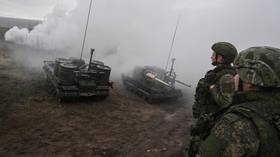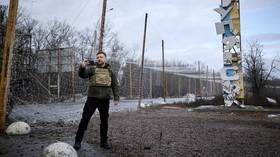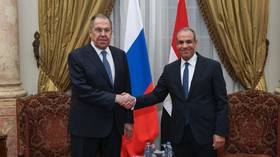India warms up to Nepal – is China feeling the heat?

As the Indian Prime Minister Narendra Modi concludes the next leg of his neighborhood bonhomie with a visit to Nepal, the world busies itself scrutinizing the possible bilateral implications – not between India and Nepal but between India and China.
Mr. Modi promised the tiny Himalayan nation ‘H-I-T’ - highways, “infoways” and “transways” as the primary areas of cooperation. It is also a region where China has been increasing its influence through aid and investment in infrastructure, energy, the military and much more.
Holding 2.27 percent of the world water resources with 6,000 rivers, Nepal is the second richest country in inland water resources – a potential that the two Asian giants are ogling to exploit with the generation of hydroelectric power.
While India is starving for more electricity – a need Nepal could quench with its water resource reserve, China faces a serious water resource crunch due to acute water pollution which its government fears may impact food production and hence economic growth.
Nepal, on the other hand, has an abundant water supply but does not have enough resources to invest in generating hydroelectric power. So far it has installed only about 600 MW against an estimated 42,000 MW hydro-electric potential.
Certainly a ripe area for investment! No wonder then the country has recently called for increased FDI from South Asian nations, including India, in its hydroelectric power sector to fulfill its domestic needs and even explore the possibilities of exporting power.
But there is more to it than just scrambling for water resources. Nepal has China to its north and India to its south, which makes it not only a strategic trade gateway for both countries, but also a key component of border security between the two Asian giants.
China which has long claimed India’s North East Frontier state – Arunachal Pradesh – as it is planning to extend a railway in Tibet from Lhasa to Tibet’s second city, Shigatse by 2020. The line would touch the borders of Nepal, Bhutan and India.
This has led many to ask is South Asia in for another bout of fierce competition leading to a possible conflict, or can Nepal be a bridge for greater cooperation between the two Asian economies.
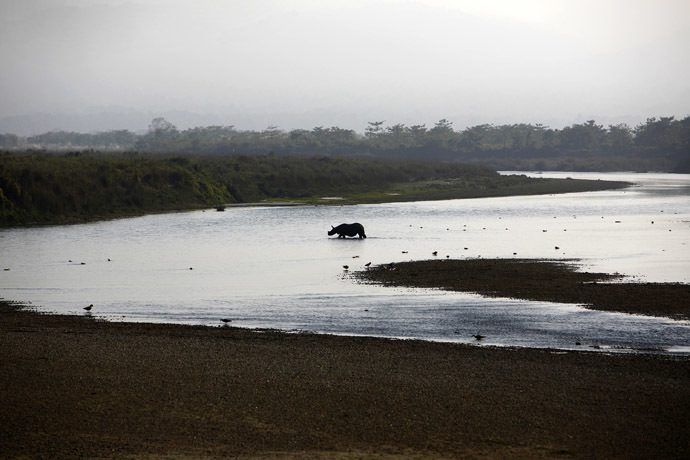
Calculus of probabilities
Explaining India’s stand, Nalin S Kohli, spokesperson for the Bharatiya Janata Party (BJP) and Director of the party's Public Policy Research Centre says: “There are irritants in terms of border disputes. However there’s ample scope for India and China to work together and that message comes across. It is the Chinese foreign minister who was one of the first persons to come to the country; the Chinese premier is expected in India later this year. We shouldn’t be victims of historical baggage. The new government attaches great importance to boosting regional relationship and cooperation. The PM’s first foreign visit was to Bhutan. So I don’t think this should be seen as any ground for competition with China or any other country.”
There are indeed many transport projects in Nepal which both the giants could cooperate to access larger markets beyond Nepal. The idea of a possible Delhi-Beijing economic cooperation in Nepal has been proposed, and China has even spelt out a conceivable Trans-Himalayan zone of cooperation.
Michael Kugelman, Senior Program Associate for South and Southeast Asia, at the Woodrow Wilson International Center for Scholars agrees the new Modi-led government is keen on improving relations with Beijing, both of whom have significant economic relationship perhaps, and the most profitable bilateral trade relationship in the world, and they also have leaders at the moment that seem genuinely interested in working out their various tensions in the long-term.
However he also cautions that the strategic calculus could change.
“Both China and India are increasingly water-short, and in the years and decades ahead we can expect their water insecurity to grow even more perilous. If both countries are facing water scarcity, the stakes would be higher for asserting their influence and engagement in water-rich Nepal. On the other hand, arguably the greatest tension in this relationship is the territorial dispute over Arunachal Pradesh. China occasionally stages provocative military movements that India regards as illegal incursions.”
China’s interest also goes beyond just business in case of Nepal – a porous entryway to the Tibet Autonomous Region (TAR) which is not just in opposition to Chinese control, but is positioned close to India, Nepal and Myanmar. Home to over 20,000 Tibetans; Nepal houses the second largest Tibetan refugee community in the world.
As Beijing engages actively in military cooperation with Nepal, it expects the Himalayan country to recognize its position on Tibet and combat any anti-China stance on its soil. The Nepal military receives substantial aid from Beijing enabling it to monitor its borders for Tibetan refugees crossing into Nepal.
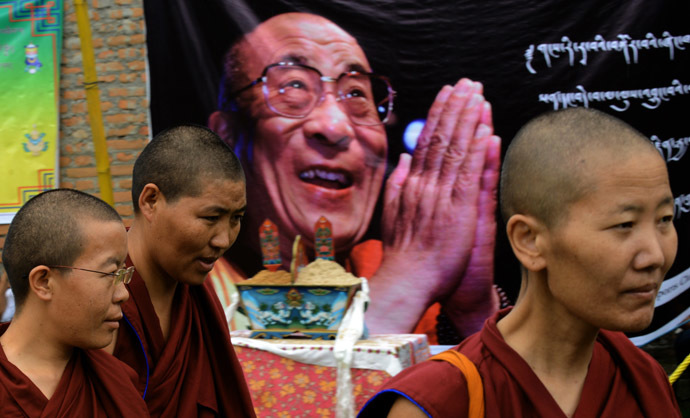
Historical baggage
Considered usually an Indian sphere of influence, this is the first time in 17 years that Nepal has received an Indian PM – a period when China was quickly bracing up its stature in the landlocked Himalayan nation.
China’s investment doubled in Nepal between 2007 and 2011 in sectors including transport, infrastructure, and hydroelectric power projects among others. Today China has overtaken India to become the largest contributor of FDI at $174 million accounting for over 60 percent of the total FDI commitment.
Apart from a 60-megawatt power plant on the Trishuli River which is under construction, Beijing is also committed to a $1.6 billion, 750-megawatt joint venture on the Seti River by 2019.
For further land trade China is upgrading the road networks across the Himalayas by renovating of the 71-mile Araniko Highway connecting Kathmandu to the Chinese border, as well as upgrading the track between Nepal's Syaphrubesi and Kerung in Tibet at a cost of $20 million.
In comparison, there are a number of past commitments made by New Delhi on infrastructure projects that are still unfulfilled. Mr. Modi faces a mammoth challenge of instilling confidence in the proper implementation of projects promised by India.
The recent visit - when the PM announced $1 billion in aid to Nepal towards development in power generation and infrastructure especially transport - seems to have helped the renewal of hope about India’s proactive foreign policy towards Nepal.
For instance the country’s Maoist faction which has been mostly anti-India was heard applauding Mr. Modi’s visit. Leaders like Baburam Bhattarai who heads the Unified Communist Party of Nepal (Maoist) were quoted lauding Mr. Modi for his awareness and intent to complete the past stalled projects.
Noteworthy deals have been agreed upon; significant among them is the 5600 MW Pancheshwar multipurpose project on the Mahakali River, which was delayed for more than a decade.
Sumit Ganguly, Professor of Political Science, Indiana University points out, “The key issue is one of following through on the various initiatives that Mr. Modi has spoken of or has discussed. India's problem is that its bureaucracy is noted for failing to implement projects in an expeditious fashion both at home and abroad.”
The immediate issue to be sorted out for India is perhaps the Power Trade Agreement (PTA) which a parliamentary panel in Nepal gave a go ahead to the government, under which New Delhi has proposed 100 percent Indian investment or joint ventures with Indian entities in the Himalayan country's power sector. However many feel it is not in Nepal’s interest as it would give Indian firms a monopoly over Nepal’s energy resources barring entry of other nations like China.
Many in Nepal especially the leftist faction have for long alleged India is intruding into its internal matters, with some even believing that India had a role to play in the overthrow of the country’s monarchy in 2006.
Mr. Modi, however, very categorically clarified that India is not vouching for a say in Nepal’s domestic matters. During his address in the Constituent Assembly of Nepal, he said, "Nepal is a truly sovereign nation. We have always believed that it is not our job to interfere in what you do but to support you in the path you decide to take."
As Kohli reiterates, “The PM’s message is very clear which is to cooperate and not to interfere. The kind of responses that came out cheering his addresses in Nepal and the subsequent media coverage that followed, I think somewhere the point has gone home that here is a prime minister who is trying to take the relationship to a new level on a mutually beneficial term.”
China seems to have taken note of Mr. Modi’s visit with the state-run Xinhua news agency terming Modi’s diplomatic efforts to widen and intensify India's ties with Nepal as ‘smart’ and lauding India’s message of non-interference in Nepal’s internal matters as a sign of the bilateral relations being on an “equal footing”. However, it also mentions that the billion dollar soft loan to be used to develop infrastructure and energy projects, and aid to curb goiter in rural districts may not be enough unless some of the key deals are brought to conclusion.
Indeed so! However a beginning has been made. Now it is for India to work towards a facelift in Nepal. Focus on execution and implementation of promised projects and a fine balance of cautious cooperation with China will be the key.
The statements, views and opinions expressed in this column are solely those of the author and do not necessarily represent those of RT.
The statements, views and opinions expressed in this column are solely those of the author and do not necessarily represent those of RT.






